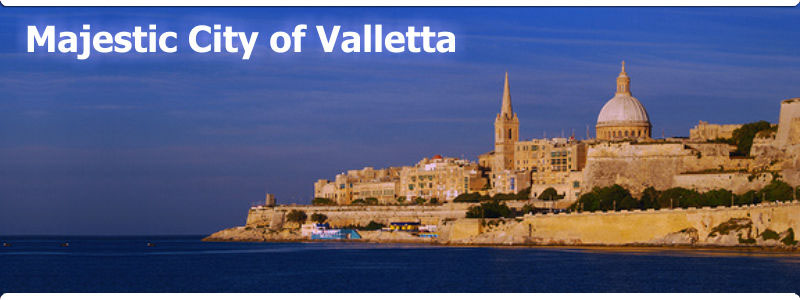| < Back to About Malta |
|
Valletta is the capital city of Malta, and is named after Jean Parisot de la Valette, who as Grand Master of the Knights of St. John of Jerusalem successfully defended the Islands from an Ottoman invasion in 1565. Valletta was founded just after the Great Siege and was built on what was then known as the Xiberras peninsula (also known as Mt. Sciberras) in order to fortify the Order`s position in Malta. Valletta is nicknamed "il-Belt" (literal translation - "the city") by the locals and is located in the centre of the Island of Malta facing the North East. Valletta has a population of over 6000 people and is the public transport hub of the entire Island. From an architectural point of view Valletta consists of buildings stretching back as far as the 16th century and is mainly Baroque in character, although some other types of architecture can be found in certain areas. The fact that Valletta has two natural harbours, Marsamxett to the West and the Grand Harbour to the East, meant that during World War II it was heavily bombed by the Axis forces, as the docks and military installations around the port were legitimate targets for Axis bombers. As a result many buildings were damaged or destroyed, including the Opera House (designed by English architect Edward Middleton Barry) whose ruins can still be seen to this day. Valletta is also home to many of Malta`s buildings of historic importance including the Auberge de Castille, formerly the official seat of the Knights of Malta of the Langue of Castille, Léon and Portugal, which is now the office of the Prime Minister of Malta. Also the Magisterial Palace, built between 1571 and 1574 and formerly the seat of the Grand Master of the Knights of Malta, now houses the Maltese Parliament and offices of the President of Malta. A large number of palaces can be found in Valletta, as well as a variety of theatres, museums, gardens, forts and various places of interest. The fortifications of the Grand Harbour, built by the Knights as a magnificent series of fortified bastions, some as high 100 metres (330 ft), all contribute to the unique architectural quality of the city of Valletta making it instantly recognisable. There are few hotels in Valletta, but it is the quality not the quantity that counts here. Valletta hotels have that special charm that few hotels on the island can have. |
| < Back to About Malta |
|
|














